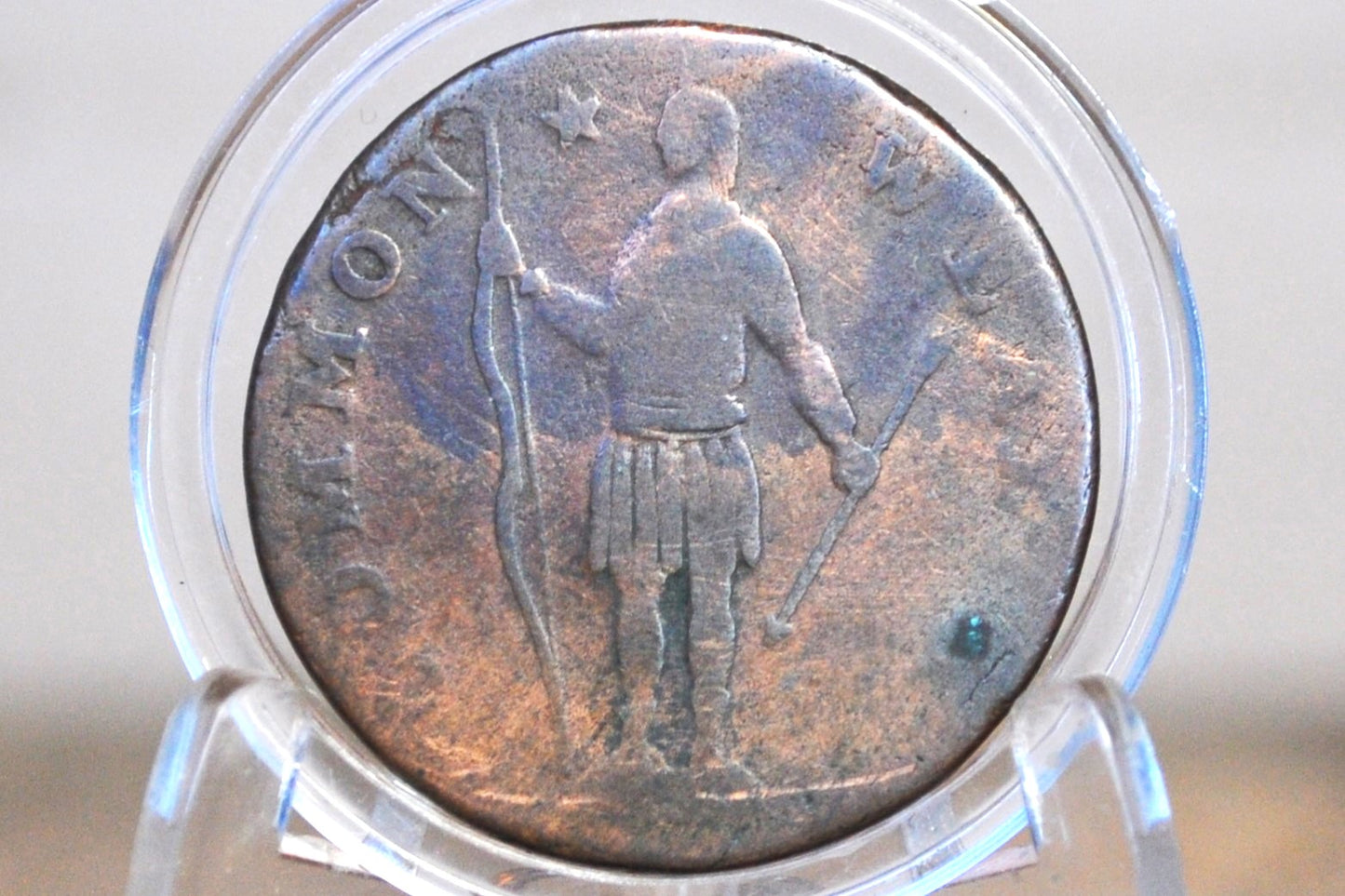1788 Massachusetts Cent - VG/Fine Details - Arrows in Left Talons - Massachusetts 1 Cent 1788 Colonial Issue Cent Commonwealth Cent
1788 Massachusetts Cent - VG/Fine Details - Arrows in Left Talons - Massachusetts 1 Cent 1788 Colonial Issue Cent Commonwealth Cent
This listing is for the photographed 1788 Massachusetts Cent. This is for the actual coin pictured. Amazing piece of history. More information on this coin type below. Excellent detail, and a great piece for a collection.
An "Act for establishing a mint for the coinage of gold, silver, and copper" was passed by the General Court if Massachusetts on Oct. 17, 1786. The following year, the court gave the direction that the design should include a native American, the reverse, a spread eagle.
Early American currency went through several stages of development during the colonial and post-Revolutionary history of the United States. John Hull was authorized by the Massachusetts legislature to make the earliest coinage of the colony (the willow, the oak, and the pine tree shilling) in 1652.
Because few coins were minted in the Thirteen Colonies, which later became the United Colonies and then the United States, foreign coins like the Spanish dollar were widely circulated. Colonial governments, at times, issued paper money to facilitate economic activities. The British Parliament passed Currency Acts in 1751, 1764, and 1773 to regulate colonial paper money.
During the American Revolution, the Colonies became independent states. No longer subject to monetary regulations arbitrarily imposed by the British Parliament, the States began to issue paper money to pay for military expenses. The Continental Congress also issued paper money during the Revolution — known as Continental currency — to fund the war effort. To meet the monetary demands of the war, State and Continental governments printed large amounts of currency, leading to rapid depreciation. By the end of the war, these paper notes became effectively worthless. Additionally, British counterfeiting gangs contributed further to the decreased value. By its conclusion, only a few counterfeiters had been caught and preemptively hanged, for the crime.
1788 Massachusetts Cent - Fine - Arrows in Left Talons - Massachusetts 1 Cent 1788 Colonial Issue Cent Commonwealth Cent, Great Detail
Δεν ήταν δυνατή η φόρτωση της διαθεσιμότητας παραλαβής




